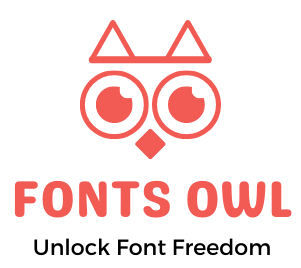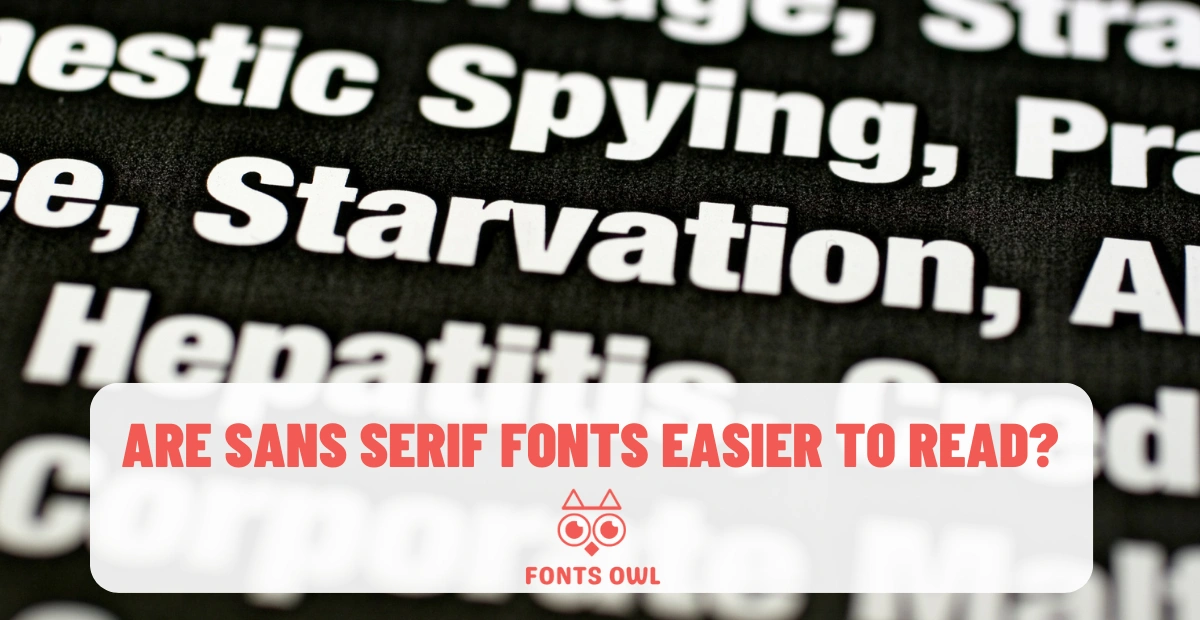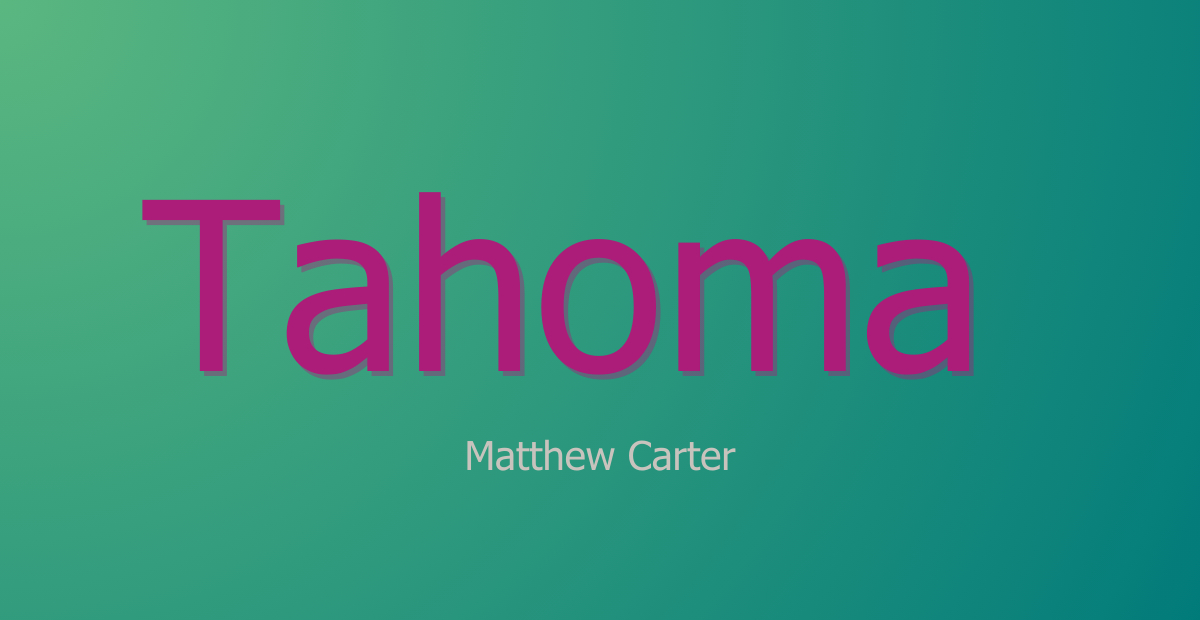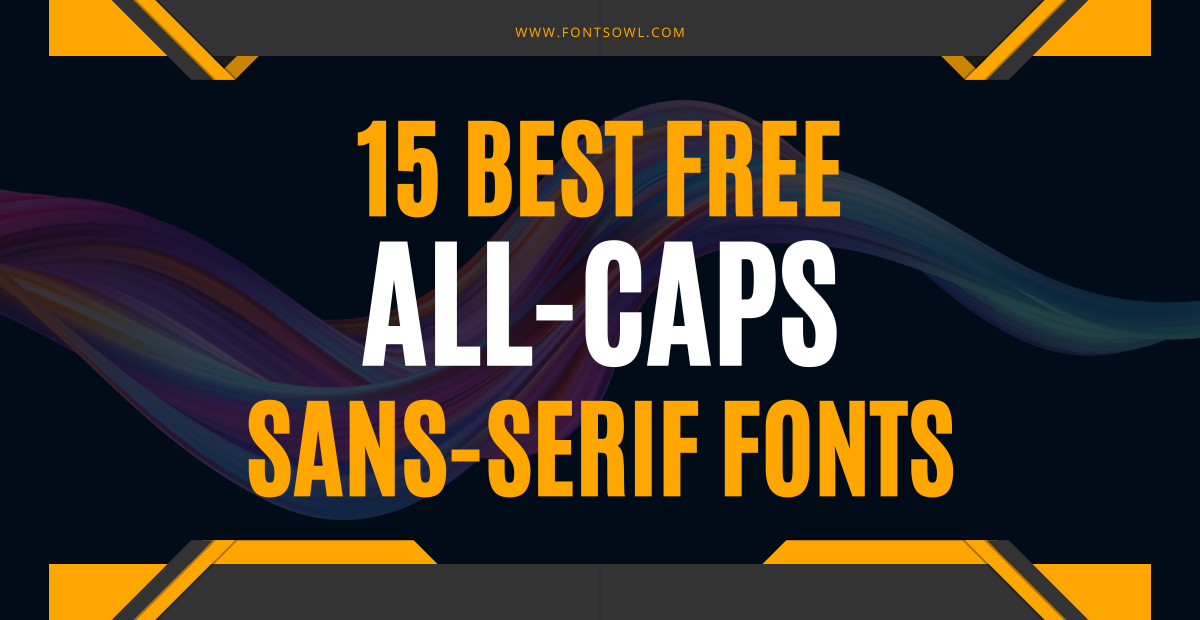Quick Answer:
Yes, sans-serif fonts are generally considered easier to read on the web because they are more legible at smaller sizes and on lower-resolution screens. However, it is important to note that readability is subjective and can vary depending on the context.
In a world where written content is consumed daily through various mediums, font choice plays a critical role in how effectively we absorb information. Just like how a well-fitted suit makes the wearer look more polished, selecting the right font can substantially improve the readability and visual appeal of any text. But with countless fonts available, how can we determine which typeface is the easiest to read? Are sans-serif fonts easier to read than their serif counterparts? Let’s dive into the fascinating world of typography and discover the factors that influence font readability, special considerations for different readers, and best practices for choosing fonts.
- Short Summary
- Understanding Serif and Sans Serif Fonts
- Factors Affecting Font Readability
- Comparing Serif and Sans Serif Fonts in Readability
- Special Considerations: Dyslexia, Low Vision, and Children
- Best Practices for Choosing Fonts
- Case Studies: Successful Font Choices
- Summary 💭
- Frequently Asked Questions
Short Summary
Understanding Serif and Sans Serif Fonts
Serif and sans serif fonts are like two sides of the same coin, each possessing unique characteristics that can significantly influence how readers perceive them. A serif font, believed to have originated in the era of the Romans, features small lines or feet extending from the letters, known as serifs. These decorative elements can make serif typefaces, such as a serif typeface, one of the easiest to read in certain contexts, such as printed materials.
On the other hand, sans serif fonts, which emerged in 1816 from the creative mind of William Caslon IV, showcase a cleaner appearance by omitting the small lines found in their serif counterparts. While serifs were initially used to aid in the engraving of letters on stones, their modern application spans across print and web documents.
To better understand the implications of using serif or sans serif fonts, we will examine the factors affecting font readability and compare the two in terms of legibility, readability, and suitability for screen or print.
Serif Fonts
Serif fonts are distinguished by their decorative letter legs and font weight, making them a popular choice for printed materials such as books, newspapers, and magazines. The serifs aid readers in navigating the text, providing a more legible reading experience. Some classic examples of serif fonts include Times New Roman, Georgia, and Garamond.
Though they are often considered more traditional, serif fonts continue to hold their ground in the ever-evolving world of typography.
Sans Serif Fonts
Sans serif fonts, characterized by the absence of serifs, offer a more modern and casual appearance. These different fonts, such as Arial, Helvetica, and Futura, generally feature lower stroke contrast and rounded letter shapes, making them one of the easiest fonts to read on screens. In fact, a sans serif font like Arial is often considered one of the easiest fonts to read due to its simplicity and clean lines.
The distinctive letter shapes of sans serif fonts, such as the difference between “n” and “h”, make them easily distinguishable and highly adaptable to various styles, from professional to informal. Their timeless design and legibility on digital displays make them a go-to choice for websites and mobile apps.
Check Out: Sans-Serif Vs Serif Font
Factors Affecting Font Readability
When assessing font readability, it’s crucial to consider factors such as typeface, size, spacing, and contrast. These elements play a vital role in determining the best font for a specific project, ensuring that the text is easily readable and accessible to a wide range of audiences. By understanding how each of these factors influences readability, we can make more informed decisions when selecting fonts, ultimately enhancing the overall user experience.
While the choice between serif and sans serif fonts is often a matter of personal preference or project requirements, some general guidelines can be applied to ensure optimal readability. In the following sections, we will delve deeper into the factors that affect font readability and discuss their implications for various readers, including those with dyslexia, low vision, and children.
Typeface
Typeface plays a significant role in readability, as certain fonts may be more legible than others depending on the context and audience. For instance, script and decorative fonts, while visually appealing, are often less suitable for body text due to their intricate designs and embellishments.
In contrast, simpler typefaces, such as serif and sans serif fonts, can provide clear and distinguishable characters, making them a more effective choice for enhancing legibility.
Size
Font size is another critical factor in readability, as larger fonts are generally easier to read. It is recommended that font size should be around 16px to 18px for body text, although this may vary depending on the font type and the medium it is being used on.
By selecting an appropriate font size and a legible font, we can ensure that our text remains legible and accessible to a wide range of readers.
Spacing
Proper spacing between letters and lines is essential for enhancing legibility and improving the overall reading experience. For optimal readability, it is generally recommended to use line spacing of 130%-150%, which means that the space around a line of text should be approximately 1.5 times the font size.
By adjusting the spacing accordingly, we can create a more comfortable reading environment for our audience.
Contrast
Contrast is another vital element in font readability. The relationship between the color of the text and its background significantly affects the legibility of the content. Higher contrast, such as black text on a white background or white text on a black background, can make it easier for readers to distinguish individual letters and improve overall readability.
In the same vein, defined and curved apostrophes and quotation marks are more conducive to readability than straight, vertical marks.
Comparing Serif and Sans Serif Fonts in Readability
As we’ve explored the various factors influencing font readability, it’s time to dive deeper into the comparison between serif and sans serif fonts. While both font types have their strengths and weaknesses, there is no definitive answer as to which one is superior in terms of readability.
Instead, it’s crucial to consider the legibility, readability, and suitability for screen or print when selecting the right font for a specific project.
Legibility
Legibility refers to the ease of recognizing individual letters, and while there is no significant difference between serif and sans serif fonts in terms of legibility, certain factors can impact the legibility of a specific font. Typeface, size, spacing, and contrast all have an effect on legibility, making it essential to carefully consider these elements when choosing a font that is both visually appealing and easy to read.
Splitting text into paragraphs is an important part of making it easier to read. Paragraphs should be used to introduce new ideas or change direction in an argument. This helps to break up the text and make it easier to follow.
Readability
Readability relates to the layout and structure of the text, and both serif and sans serif fonts have their own strengths and weaknesses in this regard. Serif fonts are typically deemed more legible in printed material, whereas sans serif fonts are generally thought to be more legible on digital displays.
Nevertheless, the data suggests that there is no definitive preference for one font type over the other in terms of readability, making it crucial to consider the specific context and audience when selecting a font.
Screen vs Print
When it comes to screen versus print readability, serif fonts are often preferred for printed materials, while sans serif fonts are more suitable for digital designs. This preference can be attributed to the visual requirements of reading from a screen, as well as the absence of spatial and tactile cues that printed materials provide.
With the evolution of technology and the increasing consumption of digital content, the choice between serif and sans serif fonts largely depends on the medium and context in which the text will be displayed.
Special Considerations: Dyslexia, Low Vision, and Children
When selecting fonts, it’s crucial to consider the needs of different readers, including those with dyslexia, low vision, and children. By understanding the specific challenges these individuals face and making appropriate font choices, we can create a more inclusive and accessible reading experience for everyone.
Fonts should be chosen based on the needs of the reader. For example, dyslexic readers may benefit from fonts with larger x-heights, while those with low vision may need fonts with higher contrast. Additionally, fonts designed specifically for this purpose.
Dyslexia
Dyslexic readers may benefit from specific fonts like Arial, Verdana, and Courier, which have been found to be more readable for individuals with this learning disability. Similarly shaped letters and characters with short ascenders and descenders can lead to letter confusion and reduce legibility for dyslexic readers, making it essential to select fonts that are clear and easily distinguishable.
Fonts like Arial, Verdana, and Courier are designed to be more legible for dyslexic readers. They have distinct shapes and characters that are easy to distinguish. Additionally, these fonts have short ascenders and descenders, which can help reduce letters.
Learn More About: Best Fonts for Dyslexia
Low Vision
People with low vision may find sans-serif fonts more readable than serif fonts due to their simple design and lack of decorative elements. By selecting fonts with higher contrast, we can accommodate the needs of low vision readers and ensure that our text remains accessible to a wide range of audiences.
Fonts with higher contrast can make text easier to read for people with low vision. This helps to ensure that our content is accessible to a wide range of audiences.
Children
Children may find sans serif fonts easier to read than adults, but there is no significant difference in legibility between serif and sans serif fonts for children.
When designing for children, using simpler language and larger font sizes may be advantageous, allowing them to easily recognize and comprehend the text.
Best Practices for Choosing Fonts
Now that we’ve explored the factors influencing font readability and the specific considerations for various readers, it’s time to discuss the best practices for choosing fonts in web design, print materials, and accessibility.
By following these guidelines, we can ensure that our text is not only visually appealing, but also legible and accessible to a diverse audience.
Web Design
For web design, factors like legibility, availability, and compatibility with various devices and browsers should be taken into account when selecting a font. Popular sans serif fonts such as Arial, Helvetica, and Roboto are widely available and compatible with most devices, making them a safe choice for web content.
Moreover, these fonts are optimized for legibility on computer screens and mobile devices, ensuring a seamless reading experience for all users.
Print Materials
When selecting fonts for print materials, factors like embellishments, letter width, and openness should be considered to ensure improved readability. Serif fonts, with their decorative elements and traditional appearance, are often preferred for printed materials such as books, newspapers, and magazines.
By choosing a font with the right balance of style and legibility, we can create visually appealing and readable print content.
Accessibility
For accessibility, factors like font choice, size, spacing, and contrast should be taken into account to accommodate readers with different needs. By selecting clear, legible fonts and ensuring proper spacing and contrast, we can create an inclusive reading experience that caters to individuals with dyslexia, low vision, and children.
By prioritizing accessibility in our font choices, we can make our content more usable and enjoyable for all readers.
Case Studies: Successful Font Choices
To further illustrate the impact of font choice on readability, let’s explore some case studies showcasing successful font choices in various industries and applications. GOV.UK, a government website known for its focus on accessibility and user experience, selected GDS Transport as their default font for web content. This font was chosen for its legibility at small sizes and semi-condensed spacing, making it easily readable across various devices and screen sizes.
BBC, a renowned media organization, opted for the Reith font for their web content, ensuring a consistent and legible reading experience across their digital platforms. The font choice reflects BBC’s commitment to maintaining a high standard of readability for their diverse audience.
Mencap, a UK charity organization supporting people with learning disabilities, selected FS Me as their font of choice, specifically designed to improve readability for their target audience. The font’s simple design, clear letterforms, and open spacing make it an ideal choice for individuals with learning disabilities.
Lastly, Superhuman, a productivity-focused email client, chose the Adelle font for their desktop application, providing a pleasant reading experience for their users. The font’s strong personality and versatility make it suitable for various contexts, from headlines to body text, ensuring a cohesive visual experience.
Summary 💭
In conclusion, the choice between serif and sans serif fonts in terms of readability is largely dependent on factors such as legibility, readability, and suitability for screen or print. By considering the needs of different readers, including those with dyslexia, low vision, and children, we can make more informed font choices and create a more inclusive and accessible reading experience. The successful font choices showcased in the case studies further demonstrate the importance of selecting the right fonts for various contexts and audiences. Ultimately, the key to choosing the perfect font lies in striking the right balance between style, legibility, and accessibility, ensuring that our content not only looks great but is also enjoyable to read for everyone.
Frequently Asked Questions
Answer: Overall, it appears that sans serif fonts may be slightly easier to read than serif fonts. Generally, it is recommended that those with low vision or dyslexia stick with sans serif fonts as they are more legible.
However, all readers should experiment with different typefaces to determine which one works best for them.
Answer: The lack of tails on Sans fonts eliminates the potential confusion that comes from the presence of them. Sans-serif fonts are easier to read because they provide a more uniform structure between letters, making the text easier to comprehend.
As such, it is easier for the reader’s eyes to track across lines without getting distracted.
Answer: Overall, it is generally accepted that serif fonts are faster and easier to read than sans serif fonts, making them the more popular choice for long-form texts.
This makes them the go-to choice for copywriters who want their text to be easy to read. Splitting into paragraphs is a key to better readability, so copywriters should start a new paragraph whenever they introduce a new idea or change direction.
Answer: Based on research, sans-serif fonts like Arial, Helvetica, Verdana or Adsans are more readable than serif fonts for those with low vision. This makes them the better choice for readability.
Answer: Legibility is focused on clarity of individual letters, symbols and words, while readability has to do with making the written content clear and easy to understand.
It is thus a broader concept that goes beyond letter visibility.





Leave a Reply